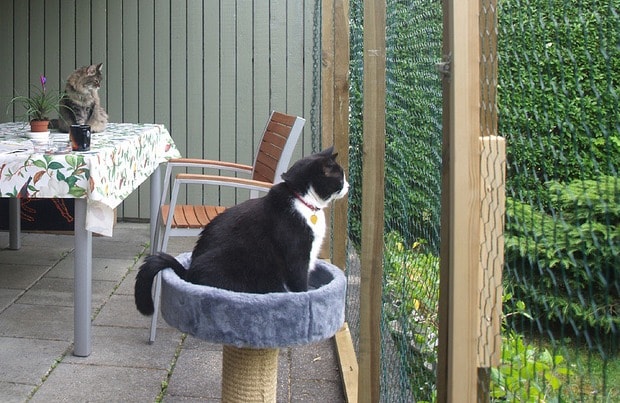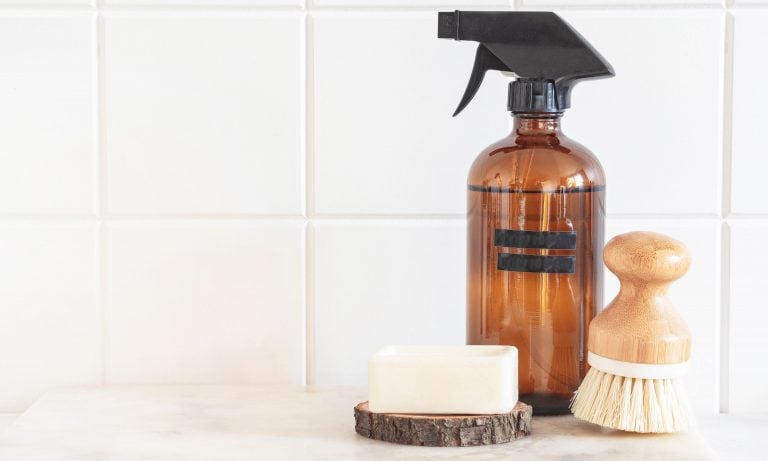Ever wish you could let your kitty enjoy the outdoors without the possibility of danger? Enter the catio, a patio designed for cats to get fresh air and commune with nature while remaining safely enclosed. From the simple to the complex, here’s how to build a budget-friendly catio that doesn’t require advanced carpentry skills.
Types of Catios
Whether you build an enclosure for all or part of your porch, a walkway, or a simple box, the structure of a catio provides an escape-proof, outdoor kitty playpen with a screened top and sides, allowing for maximum visibility and safety. Catios can be as simple as adding an extension onto a window or screening to balconies to keep your cat from slipping between the rails or jumping onto the roof. Or, if you want to go all out, you can build an entire secured patio. Designs range from an ultimate feline paradise with cat trees and a kitty hammock to just a basic box that allows her to move around outside of the house without running away or allowing predatory critters in.
How to Build a Porch Catio
How to build your catio depends on the type you have in mind, but its basic design requires sturdiness to keep the see-through part from caving in. If you’re handy with a hammer, you can make a frame with two-by-fours nailed tightly together. Place them vertically, and space them a couple of feet apart to reinforce the catio walls. For the ceiling, attach planks to your house wall horizontally every couple of feet with brackets or braces. Use a heavy-duty staple gun to secure chicken wire to the frame and back wall of the house. A kitty flap installed in your back door makes the catio accessible anytime she wants to go outside.
How to Build a Window Catio
The drawback of a window catio is that you sacrifice air conditioning by keeping the window open. But this option is smaller than a porch catio, which lessens your investment in construction materials. This aboveground version will need a secure floor. Braces or brackets attached to the side of your house are required to hold up the catio’s floor and secure the ceiling. Two-by-fours cut down to the width and height of your window should extend out from the house wall and down each corner of the catio to frame it. Adding an extra plank of lumber under the catio floor makes it extra secure.
Wire Cube Walled Catio
This type is the easiest of all to construct, although it requires a bigger financial investment. Decide how tall, wide, and long your catio will be and buy enough pop-together wire cube packs—found at most home stores—to accommodate the size. The packs contain wire mesh squares about a foot wide and high with clips to attach them together. Start with making a corner by securing two of the squares together with clips or flexible wire (or both), and build up and out from there. You can use hooks from the hardware store to screw into the side of your house and hook onto the end squares, being sure to bend the hooks into an almost closed position for extra security.
Options for Apartment Dwellers
Even if you live in an apartment with a small balcony, you still have options for creating a catio environment for your kitty. You can build a balcony catio by attaching chicken wire or mesh screens to the railings and extending the wire overhead to make a ceiling. Make sure to secure the whole balcony area with screens to provide a safe haven for your pet. Other options for small-space balconies include stand-alone cat enclosures that you can build with wood and chicken wire. If you’re not great at construction, some companies sell pre-made catios that simply pop together as freestanding enclosures for your cat. You can even purchase a baby’s playpen and attach chicken wire to the top and to the sides to secure the pen for a cat.
With a little imagination, research and investment, Kitty can enjoy the great outdoors without any worry about her.
Valerie Trumps
Share:









